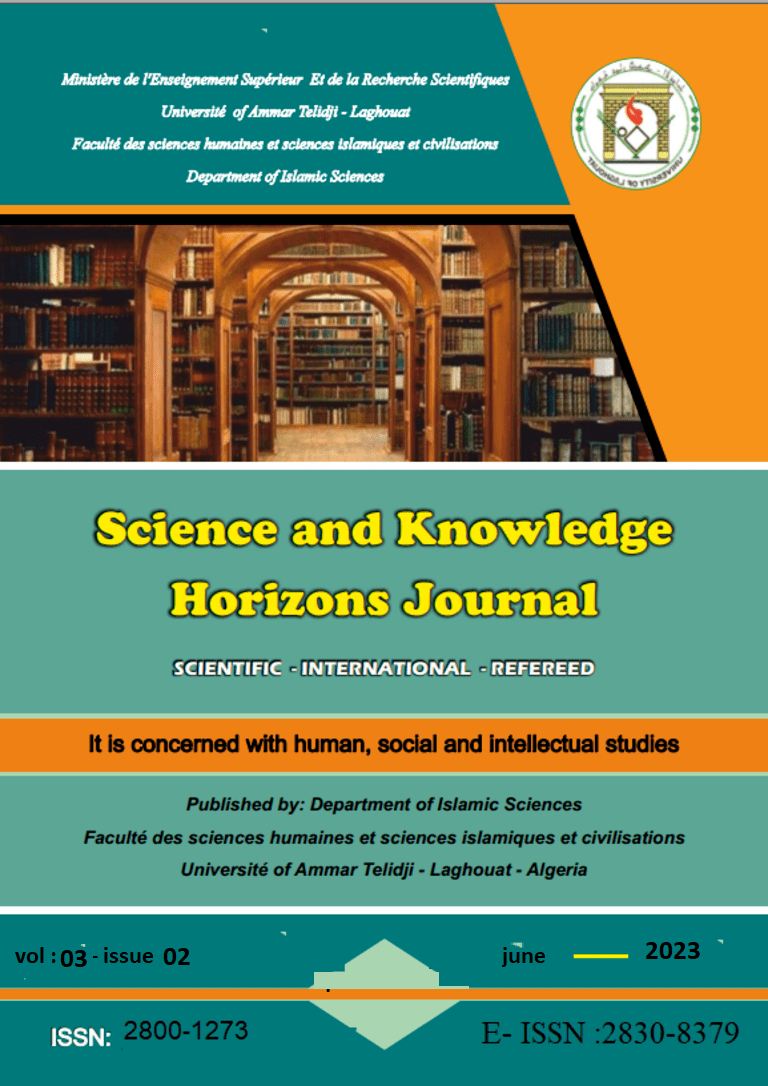Edgar Morin and the importance of Interdisciplinary Studies
Abstract
This research aims to identify the importance of interdisciplinarity from the perspective of Edgar Morin, by revealing the risks resulting from the separation of disciplines. The researcher has used the descriptive analytical approach to identify the good results of any scientific discipline, whether in terms of the accuracy of the laws reached or in terms of the ability to control the studied phenomena or the increasing possibility of predicting these phenomena. But the separation of disciplines also has risks, such as oversimplifying, fragmenting, separating complex realities and excluding what is complex. Interdisciplinarity therefore becomes of great importance. Its importance lies in its ability to understand the subjects of study in a holistic manner that takes into account the multidimensionality and the complexity in those topics. This importance is also demonstrated by the opportunities provided by interdisciplinarity for the dialogue of sciences, openness to each other, and the removal of barriers between them, both in the field of scientific research and in the field of education
Downloads
References
Alfonso Montuori, “Edgar Morin: A partial introduction”, World Futures, 60:5-6, 349-355 (Full article: EDGAR MORIN: A PARTIAL INTRODUCTION (tandfonline.com)
Edouard Kleinpeter, (2013). “Taxinomie critique de l ‘interdisciplinarité », Revue Hermès, CNRS Editions, n 67, p. p. 123-129
Frédéric Darbellay, (2011). Vers une théorie de l’interdisciplinarité ? entre unité et diversité, Nouvelles perspectives en sciences sociales,7(1), octobre
Georges Gusdorf, (1960). Introduction aux sciences humaines: essai critique sur leurs origines et leur développement, Paris, les Belles lettres
Georges Gusdorf, (1968). « Interdisciplinarité (connaissance) », Encyclopedia Universalis, vol.8, Paris
Helena Knyazeva, (2004). The complex nonlinear thinking: Edgar Morinʹs demand of a reform of thinking and the contribution of synergetics, World Futures
Helena Knyazeva, (2004). The complex nonlinear thinking: Edgar Morinʹs demand of a reform of thinking and the contribution of synergetics, World Futures, 2004, 60:5-6, pp.389-405
Jacques Hamel, (1995). “ L’interdisciplinarité. Fiction de la recherche scientifique et réalité de sa gestion contemporaine », L’Homme et la Société, n. 116, avril-juin
Jacques Hamel, (2013). « L’ʹ interdisciplinarité, manière de faire ou de dire la science ? », Espaces Temps.net, Laboratoire, 21.01.2013, (https://www.espacestemps.net/en/articles/linterdisciplinarite-maniere-de-faire-ou-de-dire-la-science-2/)
Jean Piaget, (1973). “L’épistémologie des relations interdisciplinaires », Bulletin Uni-information, n.31
Jean-Pierre Kesteman, (2004). “l’un, le multiple et le complexe. L’université et la transdisciplinarité », Cairn. Info, (https.//www.cairn.info/revue-a-contrario-2004-1-page-89.hhtm)
Judith Schlanger, (1992). « Fondation, nouveauté, limites, mémoire », Communications, n. 54, Paris, Seuil
Philippe Guillot, (1999). “Edgar Morin, la transdisciplinarité… et nous », DEES, 115, mars
Thibaut Pannetier, « Pluridisciplinarité, Interdisciplinarité, Transdisciplinarité : clarification des notions », (https://rvh-synergie.org/documentation/bulletins-correspondances/75-addictions-penser-ensemble-les-prises-en-charge/debats-reflexions/645-pluridisciplinarite-interdisciplinarite-transdisciplinarite-clarification-des-notions.html). 1/4/20223

This work is licensed under a Creative Commons Attribution-NonCommercial 4.0 International License.






